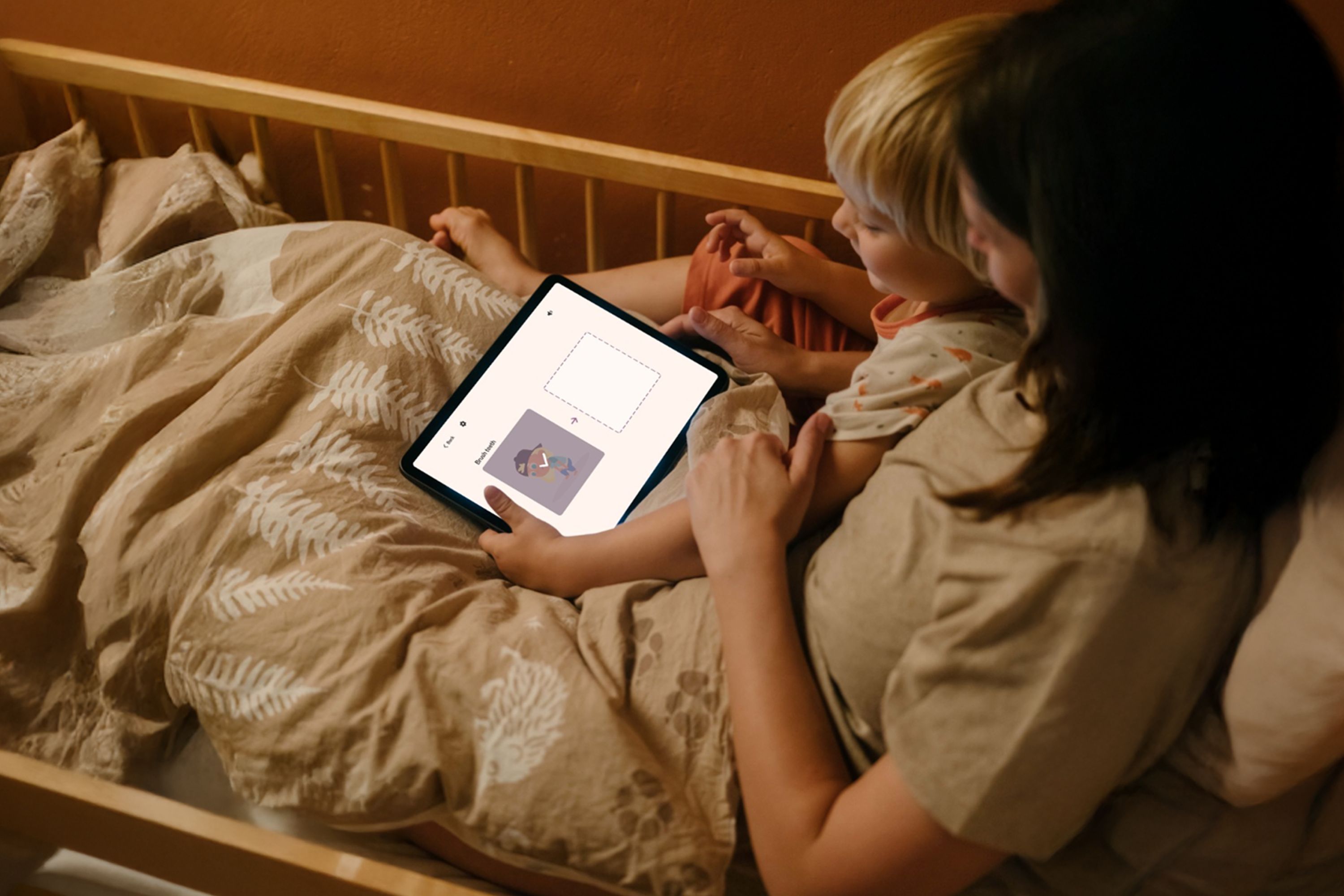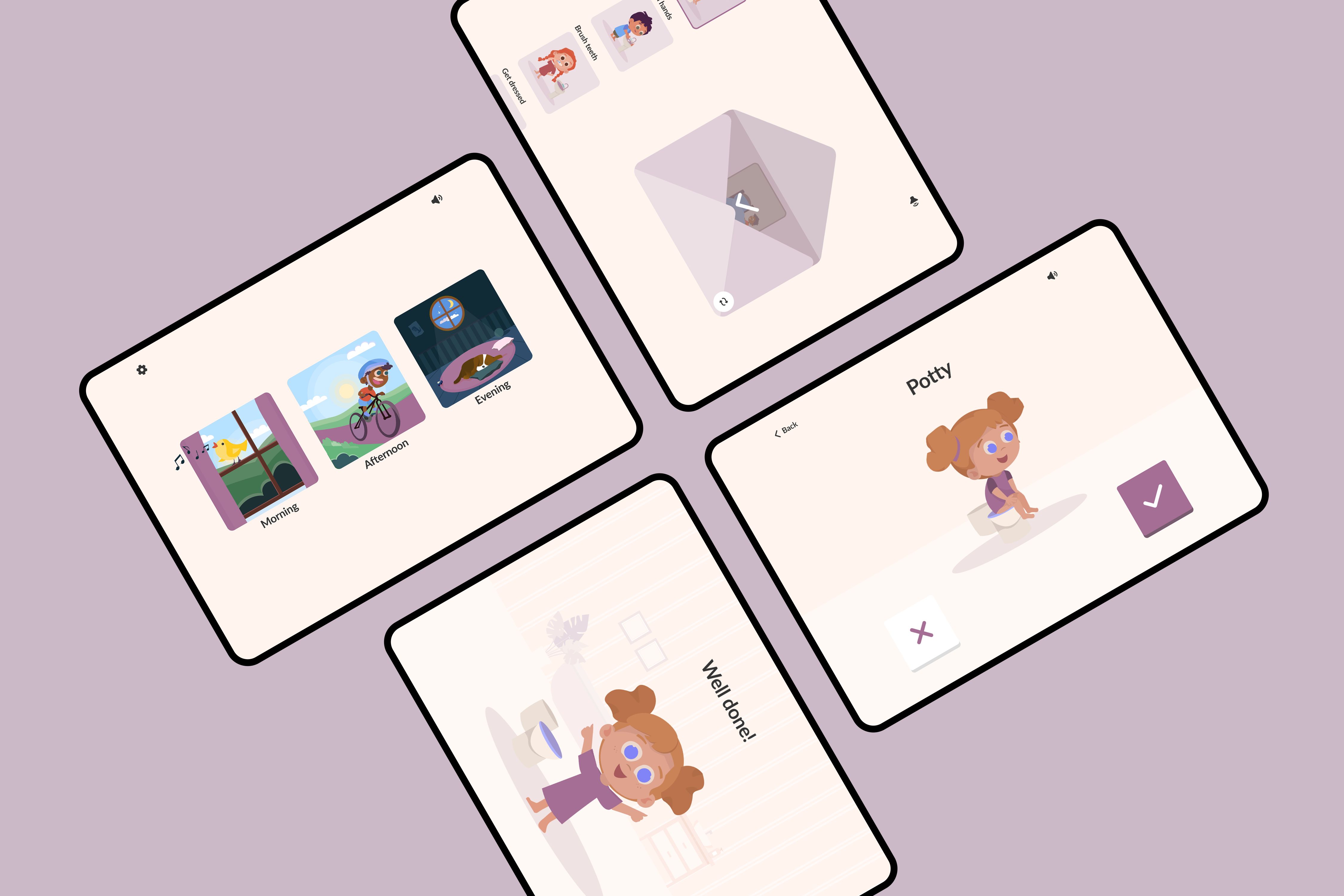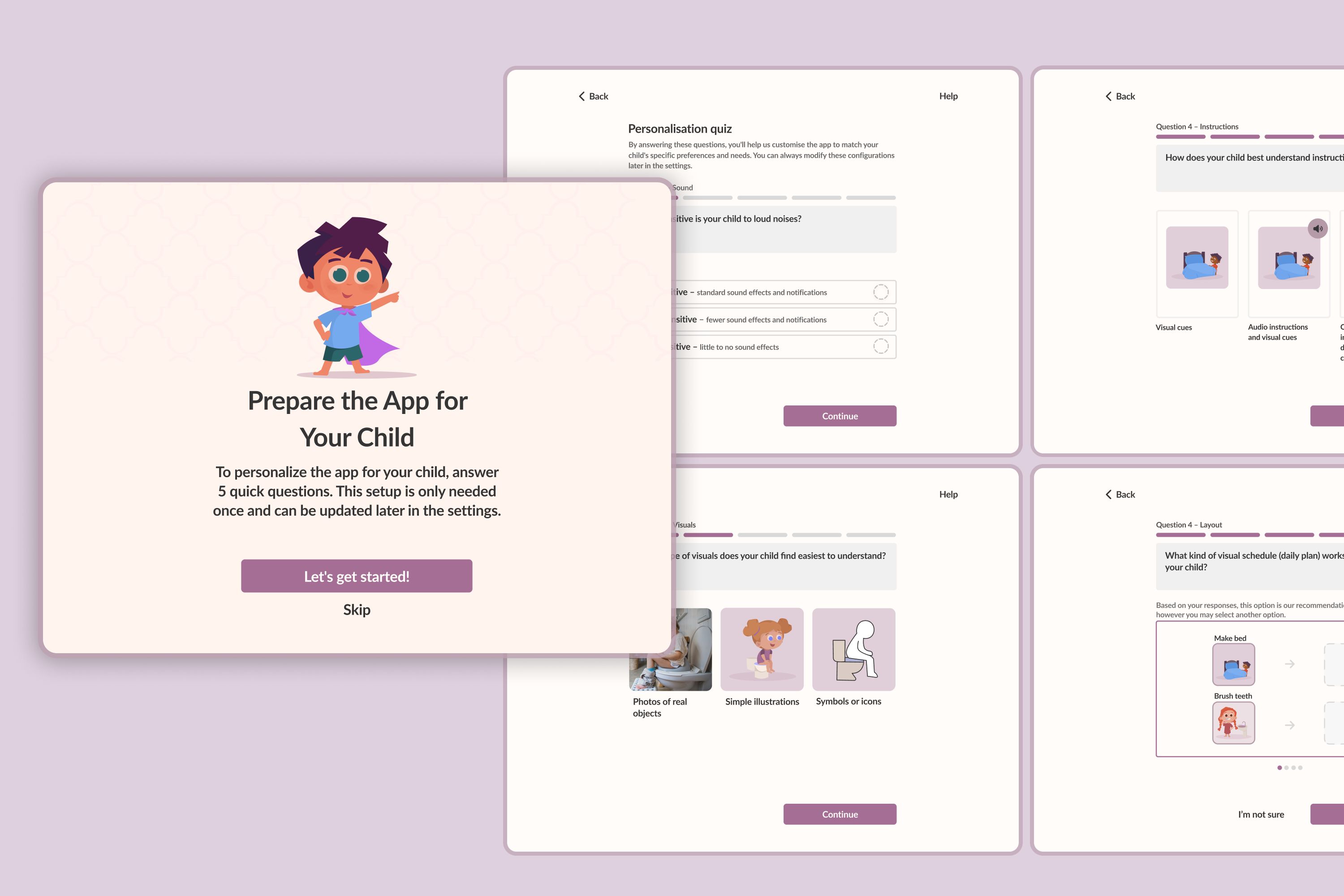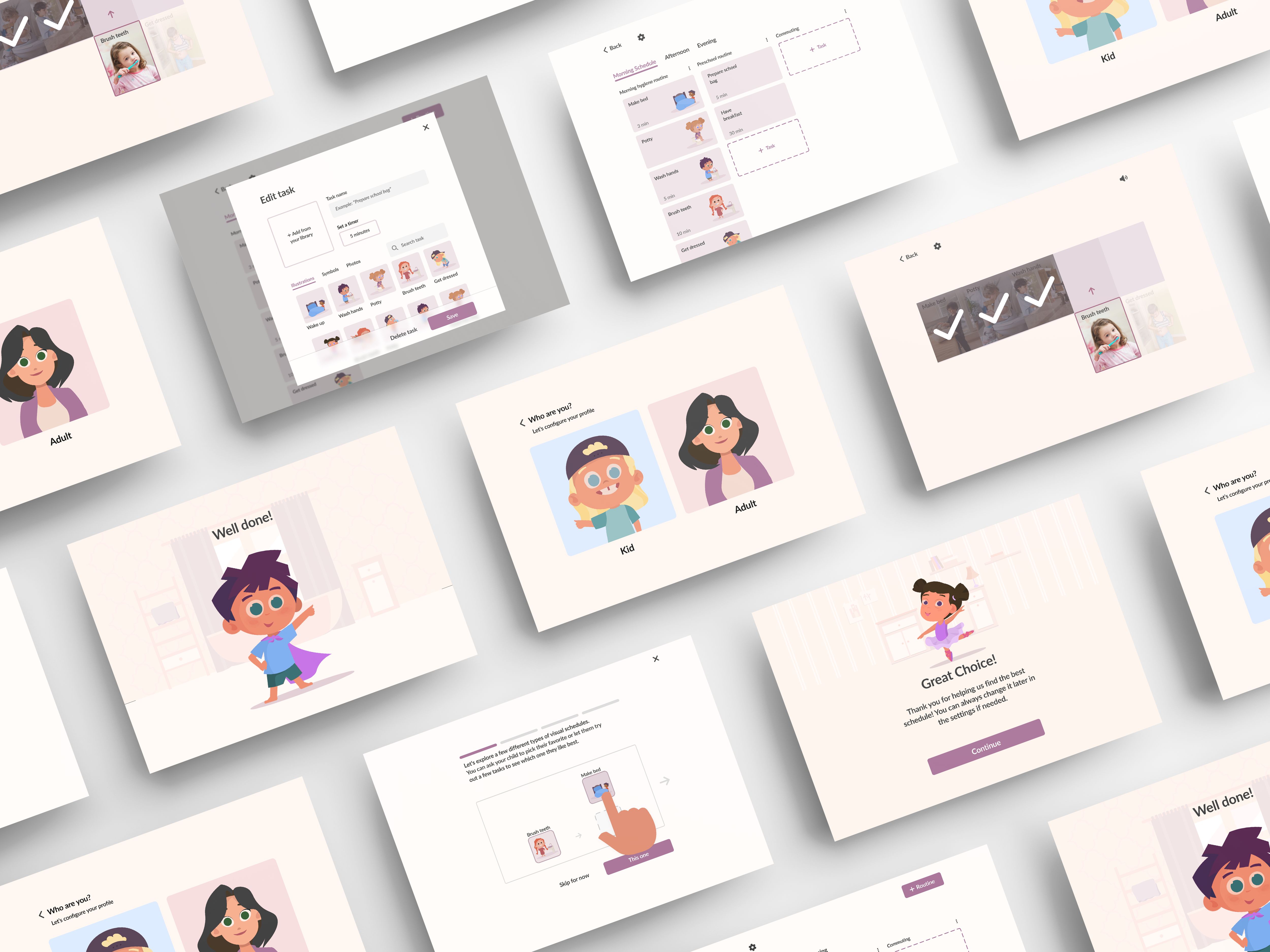
Designers
Daiana Wolf
Year
2025
Category
New Talent
Country
Germany
School
Media University of Applied Sciences
Teacher
Bibel Nora, Miers Henrik
»TimeBuddy meets the critical needs of children with autism and their caregivers. It helps them manage routines and fosters independence. The child-friendly, calming tablet interface uses visuals, sounds, and text to provide gentle guidance. A personalized avatar celebrates progress, building motivation and emotional security. Developed with user and therapist input through iterative testing, TimeBuddy offers a structured experience tailored to each child’s cognitive and emotional needs. By blending thoughtful design with purposeful functionality, TimeBuddy empowers children to confidently navigate daily life.«
UX Design Awards Jury 2025 Autumn

Three questions to the project team
What was the particular challenge of the project from a UX point of view?
A unique UX challenge was minimizing cognitive overload while supporting emotional regulation. Many children with autism find it hard to handle too much visual input or sudden changes. The interface had to guide them gently through routines without triggering anxiety. This meant not only simplifying visuals and reducing stimuli but also designing fallback interactions (e.g., canceling tasks without pressure), using feedback cues (like visual celebration or holding buttons), and avoiding “gamified” distractions. Creating something both functional and emotionally reassuring was one of the most delicate parts of this project.
What was your personal highlight in the development process? Was there an aha!-moment, was there a low point?
One of the best moments was during the user testing when a child finished all the tasks and asked if he could do more. It was such a simple thing, but it made me feel that the app was really working. It wasn’t just helpful, it was enjoyable. There was also a tougher moment when I saw that some kids didn’t understand the home screen visuals. One chose an option just because the illustration had a bike on it. That was hard to watch, but it taught me how important clear communication is. It made me realize that testing the interface and interaction isn’t enough, testing the visuals is just as crucial, especially when designing for kids who need simple yet specific and sometimes detailed images.
Where do you see yourself and the project in the next five years?
In five years, TimeBuddy aims to be a meaningful part of many families’ lives, helping children with ASD feel more confident and providing greater support to parents. While there is still much to learn, ongoing user feedback will guide continuous improvements to ensure the app meets real needs. TimeBuddy is expected to be used not only at home but also in schools and therapy settings, offering children a seamless experience throughout their day. A key next step is conducting an impact study to evaluate how effectively the app improves daily routines.
I’m passionate about UX because it can improve lives and promote inclusivity, and I want to keep refining TimeBuddy with feedback from the community.


